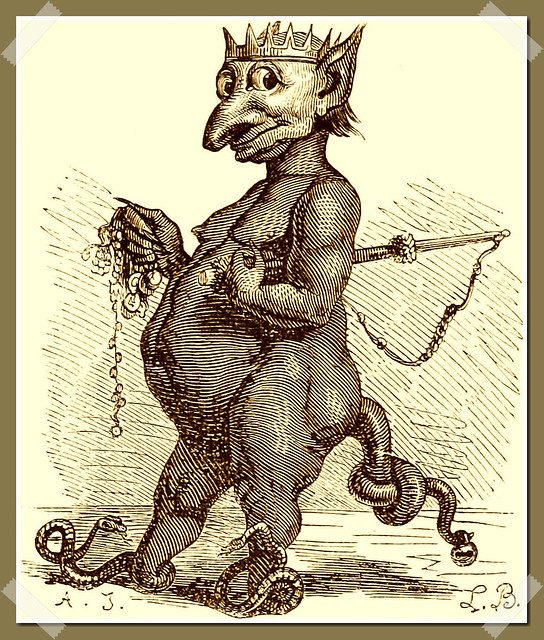
Abraxas (Abrasax, Abraxis) is the gnostic name for the demigod who rules the 365th (highest and final) aeon, or sphere, ascending to the unknowable God. Christian Demonologists put Abraxas in the ranks of Demons.
Abraxas also was the name of a sun mounting an ouroboros (a snake biting its tail) held by the highest Egyptian goddess, Isis, the creator of the Sun and mistress of all the gods. Isis mythology found its way into Gnosticism. In addition, Abraxas was associated with the Mithraic mystery religion of Persian origin, the chief rival of Christianity in Rome in its first 400 years. As did Gnosticism, Mithraism featured a complex astrology and numerology. Numerical values of Mithra’s and Abraxas’ names each total 365.
The Gnostic Abraxas created the material world and also had Demonic qualities. He is the supreme power of being, in whom light and darkness are both united and transcended. Orthodox Christians viewed Abraxas as a Demon. In turn, Abraxas became a favourite deity of heretical sects of the Middle Ages.
Gnostic talismans made of carved opal show Abraxas as a figure with a human body, the head of a rooster (or occasionally a hawk), and Serpent legs. His hands hold a shield and a whip, the shield usually inscribed with the name Iao, reminiscent of the Jewish four-letter name of God. He is often mounted on a chariot drawn by four white horses, with both Sun and Moon overhead.
The rooster represents wakefulness and is related to the human heart and the universal heart, the Sun. The human torso embodies the principle of logos, or articulated thought. The snake legs indicate prudence. The shield is symbolic of wisdom, the great protector of divine warriors. The whip denotes the relentless driving power of life. The four horses symbolize the four ethers by which solar power is circulated throughout the universe.
The seven letters of the name of Abraxas represent the seven creative powers and planetary spheres, or Angels, recognized in the ancient world. The letters add up to a numerological value of 365, the number of days and powers of the year.
Carl G. Jung called Abraxas the “truly terrible one” because of his ability to generate truth and falsehood, good and evil, light and darkness with the same word and in the same deed. In Jungian psychology there is no easy way out of psychic conflict; one must not only fight on the side of the angels but occasionally join the host of the Fallen Angels. According to Jung, fear of Abraxas is the beginning of wisdom, and liberation, or gnosis, is achieved by not resisting.
FURTHER READING:
- Hoeller, Stephan A. The Gnostic Jung and the Seven Sermons to the Dead. Wheaton, Ill.: Quest Books, 1982.
- Hyatt, Victoria, and Joseph W. Charles. The Book of Demons. New York: Simon & Schuster, 1974.
- The Old Testament Pseudepigrapha. Vols. 1 & 2. Edited by James H. Charlesworth. 1983. Reprint, New York: Doubleday, 1985.
The Encyclopedia of Demons and Demonology – Written by Rosemary Ellen Guiley – Copyright © 2009 by Visionary Living, Inc.
